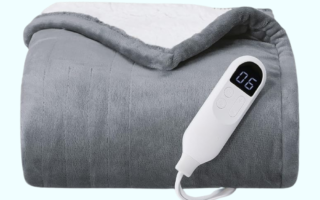A mattress spring cannot kill you. However, it can cause injuries if broken or exposed.
People often worry about the safety of mattress springs. Misconceptions and myths contribute to these fears. While a broken spring can cause discomfort or minor injuries, it is highly unlikely to be fatal. Understanding the structure and safety of mattresses can help alleviate these concerns.
Understanding Mattress Springs
Let’s dive into the world of mattress springs, debunk myths, and learn some safety tips.
What Are Mattress Springs And How Do They Work?
Mattress springs, also known as coils, form the core support system in many mattresses. They provide support, durability, and comfort. These springs compress under your body weight and bounce back when you get up, offering a balance between softness and firmness.
There are various types of mattress springs, each with its unique mechanism:
- Bonnell Coils: Hourglass-shaped coils that are interconnected. They provide a firm and supportive base.
- Offset Coils: Similar to Bonnell but with a hinging effect, offering better body contouring.
- Continuous Coils: Made from a single wire, creating a more durable and supportive structure.
- Pocket Coils: Individually wrapped coils that work independently, reducing motion transfer and offering targeted support.
Springs are usually made of steel, ensuring strength and longevity. They are arranged in patterns to distribute weight evenly and prevent sagging. The gauge of the wire, which measures thickness, also affects the feel of the mattress. Lower gauge numbers mean thicker, firmer coils, while higher gauge numbers indicate thinner, softer coils.
Understanding these basics helps in choosing the right mattress for your needs and ensures you sleep safely and comfortably.
Common Types Of Mattress Springs
There are several common types of mattress springs, each designed to cater to different sleeping preferences and needs. Let’s explore the most popular ones:
| Type | Characteristics |
|---|---|
| Bonnell Coils | Traditional, hourglass-shaped, interconnected, firm support, affordable. |
| Offset Coils | Hourglass-shaped with hinged effect, better contouring, durable. |
| Continuous Coils | Made from a single wire, durable, uniform support. |
| Pocket Coils | Individually wrapped, reduce motion transfer, targeted support. |
Here’s a closer look at each type:
- Bonnell Coils: These are the most traditional and affordable. They are durable but may create pressure points for some sleepers.
- Offset Coils: These offer better body contouring than Bonnell coils. They are durable and reduce motion transfer.
- Continuous Coils: These provide a stable and uniform support system. They are less likely to sag over time.
- Pocket Coils: These are ideal for couples as they minimize motion transfer. They offer excellent support and comfort.
Choosing the right type of spring can enhance your sleep experience and provide the necessary support for your body. Each spring type has its benefits, so consider your personal preferences and sleeping habits when making a decision.
Debunking Myths About Mattress Springs
Stories and myths have made some believe that these springs can be very dangerous. This blog post will debunk these myths and provide safety tips. Let’s dive into the truth about mattress springs.
Myth 1: Mattress Springs Can Cause Fatal Injuries
One common myth is that mattress springs can cause fatal injuries. This idea has caused a lot of fear. But, how true is this claim?
Firstly, the design of mattress springs focuses on comfort and support. They are not sharp or exposed in a way that can cause harm. In most cases, the springs are inside layers of foam or fabric.
Let’s look at some facts:
- Mattress springs are enclosed: Most mattresses have multiple layers that cover the springs.
- Manufacturing standards: Companies follow strict safety standards to ensure that springs are safe.
- Rare incidents: There are very few reports of injuries caused by mattress springs.
While it is possible to get a minor injury from a broken spring, the chances of a fatal injury are extremely low. Most injuries are minor and can be easily avoided by checking the mattress regularly.
Here’s a simple table to summarize the facts:
| Fact | Details |
|---|---|
| Enclosed Springs | Springs are inside layers of fabric and foam. |
| Safety Standards | Manufacturers follow strict safety guidelines. |
| Rare Incidents | Very few injury reports related to springs. |
Myth 2: All Mattress Springs Are Dangerous
Another myth is that all mattress springs are dangerous. This belief has led many to avoid spring mattresses. But are all mattress springs really hazardous?
Different types of mattress springs exist, and not all of them pose a risk. Here are some common types:
- Bonnell Springs: Traditional and widely used, offering good support.
- Pocket Springs: Individually wrapped, reducing the risk of exposure.
- Continuous Coils: Made from a single wire, providing durability and safety.
Each type of spring has its own safety features:
- Bonnell Springs: Covered by multiple fabric layers.
- Pocket Springs: Individually enclosed in fabric pockets.
- Continuous Coils: Designed to be durable and enclosed.
Modern mattresses are designed with safety in mind. Manufacturers use materials and designs that minimize any risk. So, not all mattress springs are dangerous. Knowing the type of springs in your mattress can help you make a safer choice.
Myth 3: Older Mattresses Are More Likely To Cause Harm
Some believe that older mattresses are more dangerous. They think that old springs can easily break and cause injuries. But is this really the case?
Older mattresses may show wear and tear, but this does not mean they are more harmful. Here are some points to consider:
- Regular maintenance: Checking and maintaining your mattress can extend its life and safety.
- Quality materials: Many older mattresses were made with high-quality materials that last long.
- Signs of wear: Look for signs like sagging or broken springs, which indicate it’s time for a replacement.
Older mattresses might have some risks, but these can be managed. Regular checks and proper care can keep an old mattress safe. If you notice any issues, it’s wise to replace the mattress to avoid any potential harm.
Here’s a quick checklist for maintaining older mattresses:
| Maintenance Tip | Action |
|---|---|
| Regular Inspection | Check for sagging and broken springs. |
| Proper Cleaning | Keep the mattress clean and dry. |
| Replace When Needed | Consider replacing if major issues are found. |
With regular care and attention, an older mattress can still be safe. The key is to stay vigilant and address any issues promptly.

The Facts: Are Mattress Springs Really Dangerous?
Let’s dive into the facts to understand if mattress springs are really dangerous and what you need to know to stay safe.
Real Risks Associated With Mattress Springs
Mattress springs, also known as coil springs, are a core component of many mattresses. While they provide support and comfort, they also pose some risks. Understanding these risks can help you make informed decisions.
- Puncture Injuries: Springs can poke through the mattress fabric, causing potential injuries.
- Wear and Tear: Over time, springs can rust or break, leading to discomfort and potential harm.
- Fire Hazard: Older mattresses with exposed springs can be more flammable.
These risks are generally low but worth noting. Proper maintenance and timely replacement of your mattress can mitigate these dangers. Investing in a mattress with high-quality springs reduces these risks significantly.
Reported Incidents: What The Data Shows
To understand the real danger, we need to look at reported incidents involving mattress springs. Data shows that while injuries do occur, they are relatively rare.
| Year | Reported Incidents | Severity |
|---|---|---|
| 2018 | 5 | Minor |
| 2019 | 7 | Moderate |
| 2020 | 4 | Minor |
Most incidents involve minor injuries like scratches or small punctures. Severe injuries are extremely rare. This data suggests that while the risk is present, it is not significant enough to cause widespread concern.
How Mattress Quality Affects Safety
Not all mattresses are created equal. The quality of your mattress plays a crucial role in safety. High-quality mattresses use better materials and construction techniques, reducing the risk of injury.
Key Factors in Mattress Quality:
- Material: High-quality foam and fabric cover the springs, preventing them from poking through.
- Construction: Well-constructed mattresses have reinforced edges and durable coils.
- Certifications: Look for certifications like CertiPUR-US to ensure the mattress meets safety standards.
Investing in a good mattress is not just about comfort but also about safety. Regularly check your mattress for wear and tear. Replace it when necessary to ensure you and your family are sleeping safely.
Safety Tips For Choosing A Mattress
Below are essential safety tips for choosing a mattress to ensure your peace of mind.
Signs Of A Safe And Well-constructed Mattress
A well-constructed mattress ensures comfort and safety. Here are some key signs to look for:
- Durable Materials: Quality materials like high-density foam or robust coils should be used. These materials last longer and offer better support.
- Edge Support: Strong edge support prevents you from rolling off the bed. Check for reinforced edges.
- Even Surface: A safe mattress has an even surface without lumps or sagging spots. This ensures uniform support.
- Breathability: Look for breathable fabrics and materials that allow air circulation. This helps in keeping the mattress cool.
- Certifications: Verify certifications like CertiPUR-US or OEKO-TEX. These ensure the mattress is free from harmful chemicals.
Below is a table summarizing these key signs:
| Feature | Importance |
|---|---|
| Durable Materials | Long-lasting and supportive |
| Edge Support | Prevents rolling off |
| Even Surface | Ensures uniform support |
| Breathability | Keeps mattress cool |
| Certifications | Free from harmful chemicals |
Importance Of Regular Inspections And Maintenance
Regular inspections and maintenance extend the life of your mattress and ensure safety. Here’s why they are important:
- Detecting Wear and Tear: Regular checks help spot early signs of wear and tear. Addressing issues early prevents accidents.
- Hygiene: Inspecting for dust mites, bed bugs, and mold keeps your mattress clean. A clean mattress is healthier to sleep on.
- Rotating and Flipping: Rotate and flip your mattress every three to six months. This helps in even wear and extends its lifespan.
- Using a Mattress Protector: A mattress protector guards against spills and stains. It also adds an extra layer of protection.
- Following Manufacturer’s Guidelines: Adhering to the care guidelines provided by the manufacturer ensures optimal performance and longevity.
Below is a checklist for regular inspections and maintenance:
- Check for sagging or lumps
- Inspect for dust mites and bed bugs
- Rotate and flip the mattress
- Use and clean a mattress protector
- Follow manufacturer’s care guidelines
What To Do If You Encounter A Problem With Your Mattress
Learn what to do if you encounter a problem with your mattress, including checking the warranty, contacting support, and simple fixes to restore comfort and durability.
Steps To Take If You Find Broken Springs
Finding a broken spring in your mattress can be alarming. Broken springs can affect your sleep quality and cause discomfort. Follow these steps to address the issue:
- Inspect the Damage: Carefully examine the area where the spring is broken. Ensure there are no sharp edges that could cause injury.
- Remove Bedding: Take off all sheets, mattress protectors, and pads to have a clear view of the problem.
- Use Temporary Fixes: Place a thick piece of fabric or padding over the broken spring to minimize discomfort. This is a short-term solution.
- Avoid Sleeping on the Damaged Area: Sleep on a different part of the mattress to prevent further damage or injury.
- Contact the Manufacturer: Reach out to your mattress provider. Many offer warranties that cover spring damage.
Here’s a table summarizing the steps:
| Step | Action |
|---|---|
| 1 | Inspect the Damage |
| 2 | Remove Bedding |
| 3 | Use Temporary Fixes |
| 4 | Avoid Sleeping on the Damaged Area |
| 5 | Contact the Manufacturer |
When To Consider Replacement
There are times when a temporary fix isn’t enough. Consider replacing your mattress in these scenarios:
- Multiple Broken Springs: If several springs are damaged, the mattress may not provide adequate support.
- Age of Mattress: Mattresses older than 7-10 years are more likely to have worn-out springs.
- Visible Sagging: Noticeable dips or sags in the mattress surface indicate significant wear and tear.
- Health Issues: If the broken springs cause back pain or disrupt your sleep, it’s time to replace.
- Unresolved Manufacturer Issues: If the manufacturer cannot fix the problem under warranty, replacement is necessary.
Here’s a quick checklist:
- Multiple broken springs
- Old mattress (7-10 years)
- Visible sagging
- Health issues caused by the mattress
- Unresolved warranty issues
Prioritize your comfort and safety by addressing these signs promptly. A well-maintained mattress ensures better sleep and overall health.



